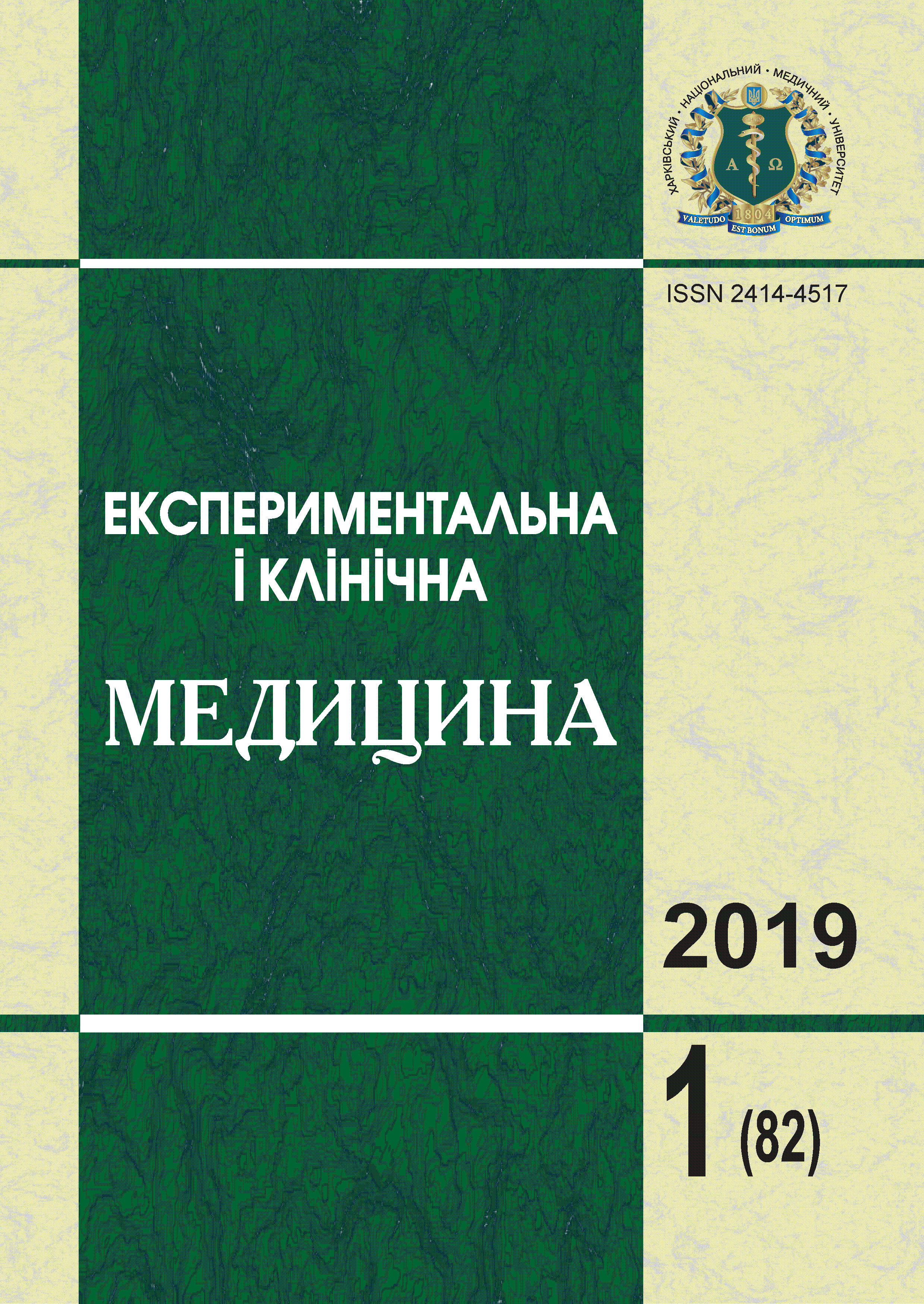Abstract
The study of the frequency of calcification of the abdominal aorta and the role of the plasma fraction of osteopontin in its development and the relationship between the degree of violation of phosphorus-calcium metabolism in patients with chronic kidney disease stage 5 on peritoneal dialysis. It was found that calcification of the abdominal aorta occurs in 73.3 % of patients in this group. Predictors of vascular calcification is the age of patients and the duration of dialysis. With the progression of the degree of vascular calcification observed deterioration of bone mineral metabolism in the form of statistically significant increase in serum phosphorus, phosphorus-calcium product and parathyroid hormone. The plasma concentration of osteopontin correlates with the severity of abdominal aortic calcification and may be a marker of vascular calcification in dialysis patients.References
Di Lullo L., House A., Gorini A., Santoboni A., Russo D., Ronco C. (2015). Chronic kidney disease and cardiovascular complications. Heart. Fail. Rev, May, № 20 (3), pp. 259–272.
Goodman W.G., London G., Amann K. et al. (2004). Vascular calcification in chronic kidney disease. Am. J. Kidney. Dis., № 43, pp. 572–579.
Giachelli C. (2004). Vascular calcification mechanisms. J. Am. Soc. Nephrol., № 15, рр. 2959–2964.
Barreto D.V., Lenglet A., Liabeuf S. et al. (2011). Prognostic implication of plasma osteopontin levels in patients with chronic kidney disease. Nephron. Clin. Pract., № 117 (4), рр. 363–372.
Sakurabayashi-Kitade S., Aoka Y., Nagashima H. et al. (2009). Aldosterone blockade by Spironolactone improves the hypertensive vascular hypertrophy and remodeling in angiotensin II over-producing transgenic mice. Atherosclerosis, № 206 (1), pp. 54–60.
Kalpakian M.A., Mehrotra R. (2007). Vascular calcification and disordered mineral metabolism in dialysis patients. Seminars in dialysis, № 20 (2), pp. 139–143.
Demirci M., Ozkahya M., Asci G. et al. (2009). The influence of dialysate calcium on progression of arterial stiffness in peritoneal dialysis patients. Perit. Dial. Int., № 29 (20), pp. 15–17.
Fernandez-Reyes M.J., Auxiliadora Bajo M., Robles P. et al. (1995). Mitral annular calcification in CAPD patients with a low degree of hyperparathyroidism. An analysis of other possible risk factors. Nephrol. Dial. Transplant., № 10 (11), pp. 2090–2095.
Niu Q., Zhao H., Wu B. et al. (2019). Study on the Prevalence of Vascular Calcification in Different Types of Arteries and Influencing Factors in Maintenance Peritoneal Dialysis Patients. Blood. Purif., № 30, pp. 1–9.
Nitta K., Hanafusa N., Okazaki M., Komatsu M., Kawaguchi H., Tsuchiya K. (2018). Association Between Risk Factors Including Bone-Derived Biomarkers and Aortic Arch Calcification in Maintenance Hemodialysis Patients. Kidney. Blood. Press. Res., № 43 (5), pp. 1554–1562.
Cho H.J., Cho H.J., Kim H.S. (2009). Osteopontin: a multifunctional protein at the crossroads of inflammation, atherosclerosis, and vascular calcification. Curr. Atheroscler. Rep., № 11 (3), pp. 206–213.

